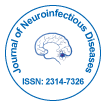Quantitative Assessment of Cortical Thickness in 3t in Behcet's disease Patients with and without Neurological involvement, as well as Parenchymal Neuro-Illness Behcet's
Received Date: Jan 02, 2023 / Published Date: Jan 31, 2023
Abstract
The goal of this study was to assess the geographic distribution of cortical damage in Behcet’s disease (BD) patients with or without neurological involvement utilising a cortical thickness assessment technique employing three-dimensional T1-weighted imaging.
Methods and materials: The prospective study comprised 58 BD patients with no neurological symptoms, 22 Parenchymal Neuro-Behçets disease (PNBD) patients, and 50 healthy controls. 3T MRI was used to obtain anatomical 3D T1 pictures from all individuals. We computed and analysed group differences in cortical thickness using a computational anatomy toolkit (CAT12). We computed and analysed group differences in cortical thickness using a computational anatomy toolkit (CAT12).
Results: When compared to healthy controls (HCs), patients with BD without neurological involvement had lower cortical thickness in the bilateral frontal, bilateral parietal, and right precuneus (p 0.05 FWE adjusted [FWEc). When PNBD patients were compared to BD patients without neurological involvement, frontoparietal cortical thickness was reduced (p 0.05 FWEc). When compared to HC patients, PNBD patients had significantly lower cortical thickness (p 0.05 FWEc). The duration of the disease was associated to cortical thickness in the right pericalcarine (p = 0.012 false discovery rate). [FDR], r = −0.40), left pericalcarine (p = 0.013 FDR, r = −0.44), and left transverse temporal (p = 0.007 FDR, r = −0.41) regions.
Conclusion: Cortical thickness decreases in BD patients who do not have neurological impairment. Cortical thickness decrease is more pronounced in people with parenchymal neurobehcet’s disease. In some areas, cortical thickness has a negative relationship with illness duration.
Citation: Adamec I (2023) Quantitative Assessment of Cortical Thickness in 3t in Behcet’s disease Patients with and without Neurological involvement, as well as Parenchymal Neuro-Illness Behcet’s. J Neuroinfect Dis 14: 435.
Copyright: © 2023 Adamec I. This is an open-access article distributed under the terms of the Creative Commons Attribution License, which permits unrestricted use, distribution, and reproduction in any medium, provided the original author and source are credited.
Share This Article
Recommended Journals
Open Access Journals
Article Usage
- Total views: 907
- [From(publication date): 0-2023 - Apr 05, 2025]
- Breakdown by view type
- HTML page views: 611
- PDF downloads: 296
